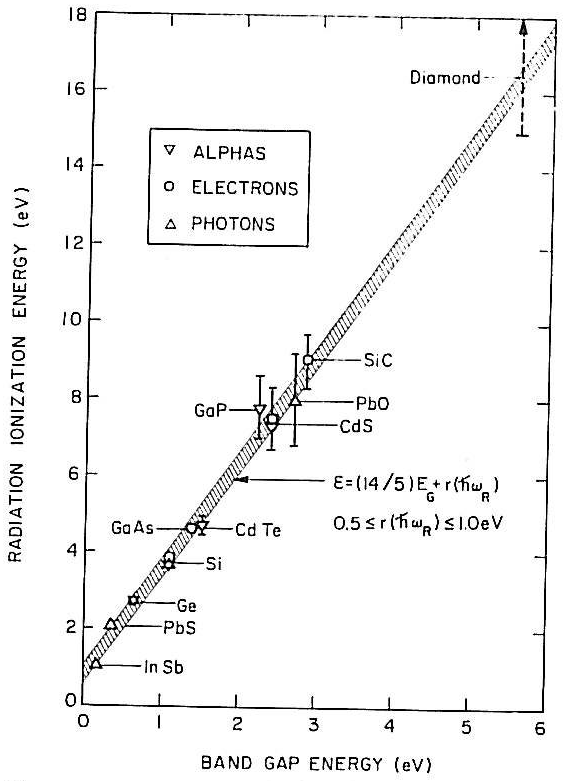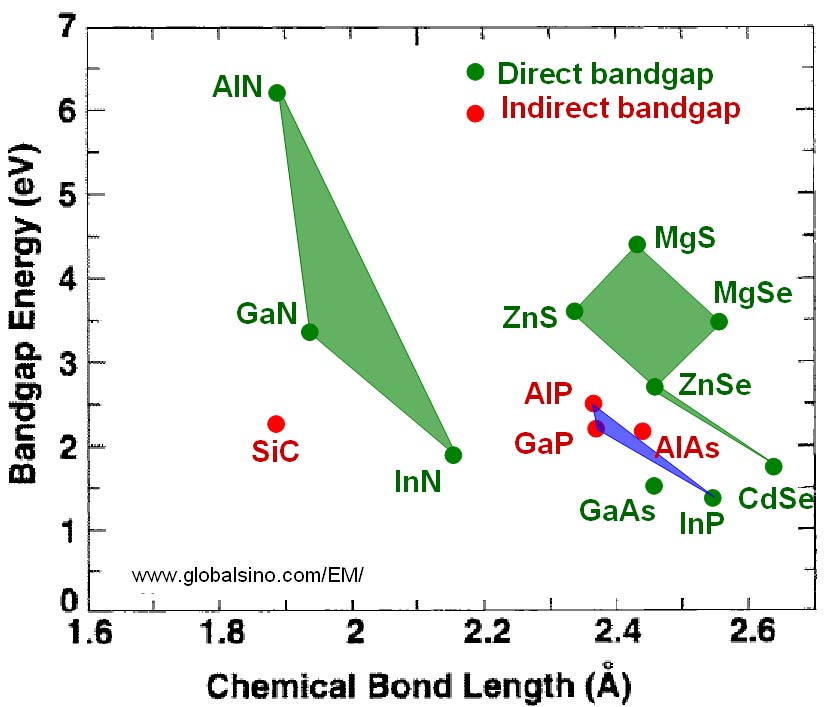=================================================================================
Figure 4636a and Table 4636 shows the average energy (radiation ionization energy) required to form one electron-hole pair versus bandgap energy for a number of semiconductor materials.

Figure 4636a. The average energy required to form one electron-hole pair versus bandgap energy for a number of semiconductor materials [1].
Table 4636. Properties of Semiconductor Materials. [1]
Figure 4636b shows bandgap and chemical bond length for semiconductors used in visible LEDs (light emitting devices).

Figure 4636b. Bandgap and chemical bond length for semiconductors used in visible LEDs (light emitting devices). Adapted from [2]
| |
Atomic Number (Z) |
Band Gap (eV) |
Energy per e-h Pair (eV) |
Best γ-Ray Energy Resolution (FWHM) |
Si (300 K) |
14 |
1.12 |
3.61 |
- |
| 1.17 @ 77 K |
|
|
Ge (77 K) |
32 |
0.74 |
2.98 |
420 eV @ 100 keV |
| 920 eV @ 660 keV |
| 1300 eV @ 1330 keV |
CdTe (300 K) |
48-52 |
1.47 |
4.43 |
3800 eV @ 122 keV |
| 7500 eV @ 661 keV |
HgI2 (300 K) |
80-53 |
2.13 |
6.5 |
850 eV @ 6 keV |
| 3500 eV @ 122 keV |
GaAs (300 K) |
31-33 |
1.43 |
4.2 |
650 eV @ 60 keV |
| 2600 eV @ 122 keV |
Note that at a misfit dislocation, the effective energy gap Eg is reduced. However, line defect self-interstitials in silicon give rise to
an energy-loss peak at 2.5 eV, measured by using EELS technique. [3]
[1] Glenn F. Knoll, Radiation Detection and Measurement, Wiley (1979).
[2] Ponce, F. A. and Bour, D.P., Nature, 386, (1997) 351.
[3]
Takeda, S., Terauchi, M., Tanaka, M., and Kohyama, M. (1994) Line defect configuration incorporated
with self-interstitials in Si: A combined study by HRTEM, EELS and electronic
calculation. In Electron Microscopy 1994, Proc. 13th Int. Cong. Electron Microsc., Paris, Vol.
3, pp. 567–568.
|